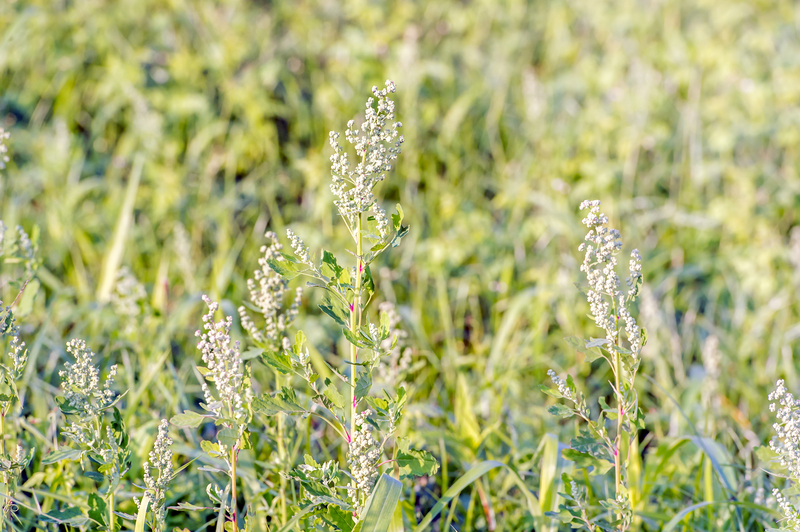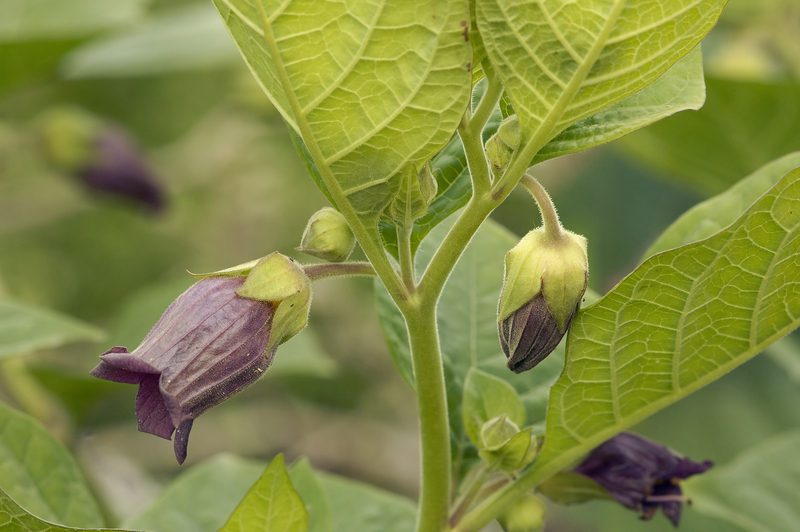Reviving Soil Health from Organic Waste
Posted on 03/07/2025
Reviving Soil Health from Organic Waste: An In-Depth Guide
Soil health is at the core of sustainable agriculture and vibrant ecosystems. As concerns about soil degradation, food security, and sustainability rise globally, organic waste recycling offers a viable pathway toward restoring and maintaining fertile, productive soils. In this comprehensive guide, we explore how reviving soil health from organic waste can transform agricultural landscapes, reduce landfill loads, and foster a healthier environment.

Understanding Soil Health and Its Importance
Soil health refers to the continued capacity of soil to function as a living ecosystem that sustains plants, animals, and humans. Healthy soils are:
- Rich in organic matter
- Full of microbial life
- Well-structured for proper water & nutrient cycling
- Resilient against pests, diseases, and extreme weather
Poor soil health leads to: reduced agricultural productivity, increased erosion, water quality issues, and vulnerability to climate change.
The Global Challenge of Soil Degradation
Conventional agricultural methods, excessive use of chemical fertilizers, tillage, and deforestation contribute to soil degradation. Studies suggest that over one-third of the world's soils are already degraded. Soil loss and reduced fertility can threaten food security for millions.
Organic Waste: A Valuable Resource for Soil Revival
Organic waste, often viewed simply as 'garbage', is in fact a critical resource for reviving soil health. By recycling food scraps, yard trimmings, livestock manure, and other biodegradable materials, we can transform waste streams into nutrient-rich compost and soil amendments that restore and enhance soil fertility.
Types of Organic Waste That Improve Soil Health
- Kitchen scraps - fruit & vegetable peelings, coffee grounds, eggshells
- Garden waste - grass clippings, leaves, pruned branches
- Livestock manure - cow, chicken, and horse manure (properly aged)
- Crop residues - straw, corn stalks, and other plant by-products
- Food processing waste - brewery grains, vegetable trimmings
Note: Avoid composting meats, dairy, and oily foods in home systems as they attract pests.
The Science Behind Organic Waste Recycling and Soil Restoration
When organic waste is returned to the land, a series of natural processes enriches the soil by:
- Increasing organic matter content
- Boosting soil biodiversity and microbial activity
- Improving soil structure and moisture retention
- Enhancing nutrient cycling and reducing need for synthetic fertilizers
Composting: The Engine of Soil Renewal
Composting is the managed decomposition of organic waste into a stable, humus-rich material. It is a cornerstone practice for restoring soil health with organic byproducts.
During composting, beneficial microbes break down waste, creating heat and transforming raw material into nutrient-rich compost that can be safely applied to fields and gardens.
Benefits of Applying Compost to Soil
- Improves soil fertility: Supplies essential macro and micronutrients for plant growth
- Feeds beneficial microbes: Enhances decomposition, nutrient cycling, and disease suppression
- Increases water retention: Compost-amended soils hold more moisture and resist drought
- Reduces soil erosion: Builds healthy structure with better aggregation and porosity
- Organic pollutant breakdown: Microbial activity helps decompose contaminants
Reviving Soil Health from Organic Waste: Techniques and Practices
1. On-Farm Composting
Farmers and gardeners can make their own compost from farmyard manure, crop residues, and food waste. Proper aeration, moisture control, and balancing carbon-to-nitrogen ratios ensure high-quality compost in a few months.
2. Backyard and Community Composting
Homeowners can establish piles or use compost bins to divert organic waste from landfills and boost local soil health. Community gardens often set up centralized compost systems, providing local growers with nutrient-rich amendments for free or low cost.
3. Municipal Organic Waste Programs
Many cities now offer curbside collection of organic material, which is processed at industrial composting facilities. Finished compost is used in landscaping, agriculture, and to reclaim disturbed lands.
4. Vermicomposting (Worm Composting)
Red wiggler worms process food scraps into high-quality castings, a potent biofertilizer for small-scale gardening and container plants.
The Role of Microbes in Revitalizing Soils
Soils teeming with active microbes are healthier and more productive. Microbial communities decompose organic matter, release nutrients, and form symbiotic relationships with plant roots (e.g., mycorrhizae, nitrogen-fixing bacteria).
Organic waste feeds these microbes, creating a soil food web that supports soil revival and long-term fertility. This is a primary pathway for reviving soil health via organic residue recycling.
Fungal and Bacterial Decomposition
Fungi break down woody, fibrous material, while bacteria quickly process proteins and sugars. Together, they turn waste into stable humus, improving soil's cation exchange capacity and plant nutrient availability.
Environmental Benefits of Using Organic Waste for Soil Health
Choosing to revive soil health from organic waste provides wide-ranging benefits beyond productivity:
- Reduces landfill waste: Diverts valuable organic matter from dumps, lowering methane emissions
- Sequesters carbon: Increasing organic matter stores atmospheric CO? in the soil, helping mitigate climate change
- Protects water quality: Healthy soils filter contaminants, reduce fertilizer runoff, and safeguard drinking water
- Promotes biodiversity: Rich organic soils host more insects, fungi, microbes, and wildlife
Reviving Soil on a Commercial Scale: Agricultural and Industrial Applications
Organic Farming
Organic farms rely on compost and green manures as the primary sources of nutrients, maintaining soil fertility without chemical inputs. Cover crops and crop rotation support microbial diversity and soil structure.
Regenerative Agriculture
This holistic approach integrates organic waste recycling, no-till systems, livestock integration, and perennial plants to build resilient soils over time. The goal is to restore soil life, improve carbon storage, and enhance ecosystem services.
Rehabilitation of Degraded Lands
Organic compost and mulch are applied to eroded or mined sites. Over several years, these inputs rebuild soil, support plant colonization, and enable restoration of natural ecosystems.
Industrial-Scale Composting
Large facilities process thousands of tons of food and green waste, supplying landscapers, farmers, and urban projects with bulk compost to enhance soil performance and plant vitality.
Reviving Soil Health: Step-by-Step Guide for Home Gardeners
Here is a practical pathway to boost your own soil using household organic waste:
- Select a composting area or bin - Choose a shady spot, or use a tumbling bin for faster results.
- Add green and brown materials - Alternate nitrogen-rich greens (kitchen waste, lawn clippings) with carbon-rich browns (dry leaves, shredded paper).
- Maintain moisture - Keep compost as damp as a wrung-out sponge.
- Aerate - Turn the pile weekly to introduce oxygen and speed decomposition.
- Harvest - After 2-6 months, finished compost is dark, crumbly, and earthy-smelling. Apply 2-4 inches to garden beds or around trees.
Mulching: A Simple Way to Recycle Organics and Protect Soil
Spread grass clippings, straw, or shredded leaves on top of the soil. Organic mulch feeds soil organisms, suppresses weeds, and conserves moisture--all steps toward revitalizing soil vitality from organic leftovers.
Barriers to Widespread Adoption and How to Overcome Them
- Lack of knowledge: Education and extension services can teach communities and farmers the benefits and methods of using organic waste to restore soils.
- Infrastructure gaps: Investment in collection and processing facilities makes it easier to keep waste streams clean and usable.
- Regulatory hurdles: Policy support is needed to encourage composting and allow safe land application of organic amendments.
- Social perceptions: Normalizing composting at schools, businesses, and in public spaces can shift cultures toward sustainability.
Frequently Asked Questions about Reviving Soil Health from Organic Waste
Is all organic waste suitable for soil enrichment?
Most plant-based organic waste is ideal for composting. Some items (meat, dairy, diseased plants) require caution to avoid pests, pathogens, and odors. Commercial systems handle a wider diversity safely.
How long does it take to see improvements in soil health?
Gardeners often notice better water retention, soil texture, and plant vigor within a season. Agricultural fields show major changes over several years of consistent organic input.
Can organic waste replace chemical fertilizers completely?
Organic amendments can supply most nutrients, but high-value or cash crops may still require supplemental fertilization. Regular testing is advised to balance soil fertility.

The Future: Innovations and Emerging Practices
- Biochar and compost blends: Charcoal made from organic waste locks away carbon and enhances soil's nutrient retention.
- Precision compost application: GPS and soil mapping ensure organic matter is used where needed most.
- Digestate from anaerobic digestion: Liquid and solid byproducts from biogas facilities enrich soils and reduce fertilizer dependence.
- Urban agriculture and green roofs: Organic waste recycling supports local production and mitigates urban heat islands.
New policies and community programs further encourage the revitalization of soil through organic waste reclamation.
Conclusion: A Transformational Pathway for Sustainable Agriculture
Reviving soil health from organic waste is a win-win solution: It reduces landfill loads, mitigates climate change, supports food security, and restores our planet's most precious resource--the soil.
Whether you're a home gardener, farmer, policymaker, or concerned citizen, leveraging organic waste for soil revival is one of the simplest, most impactful actions you can take. Start composting, advocate for organic recycling, and join the global movement to heal the soil beneath our feet.
References and Further Reading
- FAO. 2017. Soil Organic Carbon: the hidden potential.
- United Nations Decade on Ecosystem Restoration (2021-2030)
- USDA Natural Resources Conservation Service - Soil Health Resources
- Compost Council of Canada - Resources on Composting
- Rodale Institute - Regenerative Agriculture
Act now, turn your waste into a resource, and help revive the world's soils for future generations.



